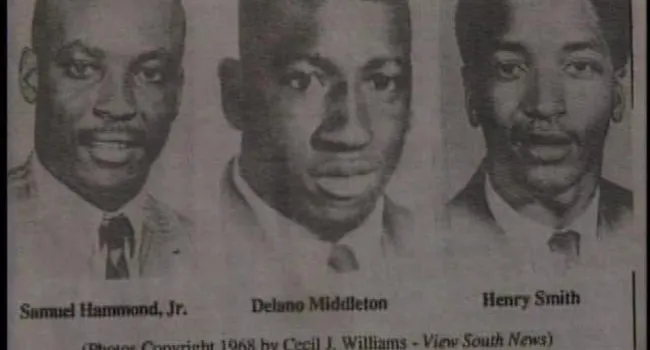A look at the timeline of the Orangeburg Massacre: Monday, February 5, 1968.
Following a wave of campus protests over signs of racial inequity, students, frustrated by months of ineffective negotiations attempted to desegregate the All Star Bowling Lanes. John Stroman led that effort and reflects on the desire of blacks to be allowed into movie theaters, as well. Dr. Oscar Butler, former Dean of Men at S.C. State, reflects on that time. Dr. Maceo Nance recalls that the bowling alley was the "straw that broke the camel's back," but there were many things in the community that citizens were dissatisfied with. But the bowling alley was located in a small shopping center that included a large grocery store where students were in and out all day long. There were several other stores that were soliciting the patronage of the students, and the bowling alley was right in the midst. In addition to being segregated, there was a very visible sign in the window that said "Whites Only."
The first night, Monday night, nothing happened, no looting or rioting. Blacks went to the bowling alley and when the Chief of Police came to close the bowling alley, they left. On Tuesday morning, the owner of the bowling alley went to City Council to protest the closing of the bowling alley and the loss of revenue, and asked for police protection and that the students be arrested if they returned. On Tuesday night, Chief Strom told John Stroman he would have to leave or go to jail. When they left to go to jail, there were only about 30 students there. After the arrests, there were about 400 students at the bowling alley. Cecil Williams recalls hearing a sound that startled everyone and students started running. Police officers started running behind them, swinging their clubs. An officer had acid thrown into his face and there was a lot of pushing and shoving. Ten students were hospitalized with injuries and there were some female students injured, one of whom was clubbed by a police officer. Gov. McNair requested that the courts be used, rather than violence. Cleveland Sellers, who had been an organizer for SNCC, the Student Nonviolent Coordinating Committee, spoke at an event; however, the bowling alley was not an interest. At that time, his interest was in developing a consciousness among people of African descent.
Standards
- 8-7 The student will demonstrate an understanding of the impact on South Carolina of significant events of the late twentieth and early twenty-first centuries.


